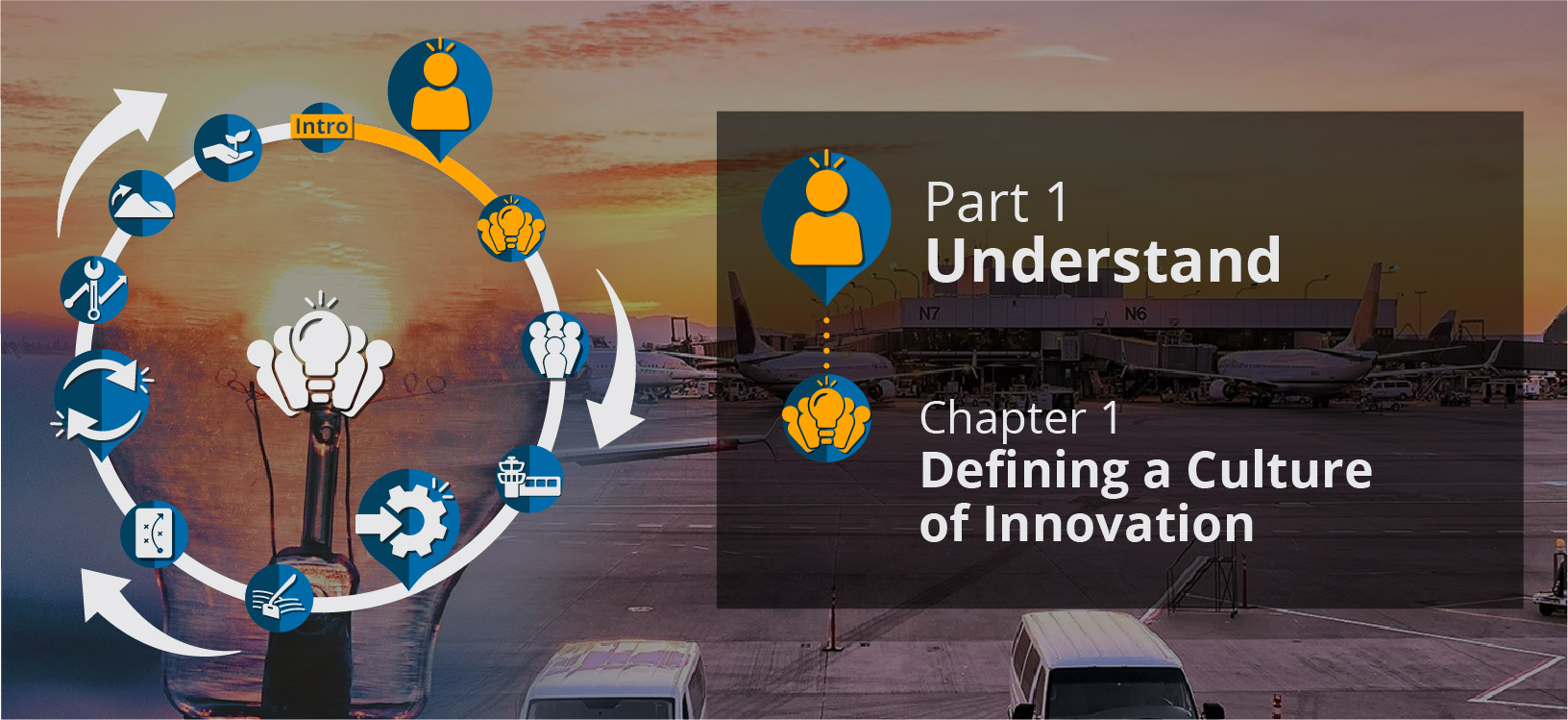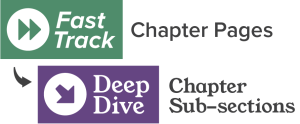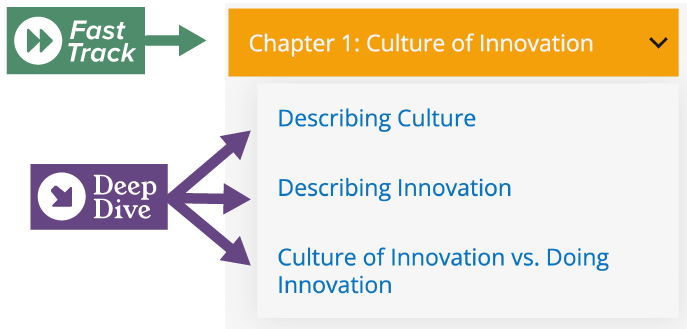

This is a Deep Dive page. Select the chapter for the Fast Track
Describing Culture
What is an Organization's Culture?
According to Merriam-Webster, one definition of culture is “the set of shared attitudes, values, goals, and practices that characterizes an institution or organization.”1 If an organization had a personality, this is what it would be.
Leaders from major companies in various industries provide helpful insight into further defining the concept of culture as well:2
- Airbnb cofounder Brian Chesky notes, “Culture is simply a shared way of doing something with a passion.”
- Shopify VP of HR Brittany Forsyth says, “Determine what behaviors and beliefs you value as a company and have everyone live true to them. These behaviors and beliefs should be so essential to your core, that you don't even think of it as culture."”
- Pixar's president, Ed Catmull, highlights, “A hallmark of a healthy creative culture is that its people feel free to share ideas, opinions, and criticisms. Lack of candor, if unchecked, ultimately leads to dysfunctional environments.”
According to research presented in Diagnosing and Changing Organizational Culture, there are four main types of organizational culture:
- Clan: A family-style corporate culture that is adaptable, team oriented, and more horizontal in structure. This culture works well for smaller companies and is often present in start-ups.
- Adhocracy: A risk-taking culture focused on innovation and adaptability. This culture is present in companies that want to differentiate themselves from others by being the first to have new ideas or products. This culture can be seen most often in the technology industry.
- Market: A competitive, externally focused and growth-oriented culture centered on reaching profitable goals in a controlled environment at the expense of internal satisfaction. This culture may be present at larger organizations that are leaders in their fields.
- Hierarchy: An internally focused, rigid culture that values structure and stability and features a traditional corporate structure with a clear chain of command. This culture is present at organizations that are customer service-oriented and focused on day-to-day operations.3
U.S. airports are either divisions of governmental authorities or structured as airport authorities-both of which utilize a hierarchical structure and closely align with the definition of “hierarchy,” as shown above. Up until the past few years, most airports have operated with multiple management tiers between staff and the C-suite; they have typically been risk averse and safety focused, following tried-and-true processes. If you randomly select an airport from the FAA's list of public airports, the National Plan of Integrated Airport Systems, you will find that most meet these criteria.
However, with the advent of a wide array of rapidly changing advancements and challenges-from touchless technology for check-in and baggage handling, security scanning, and border control to the rise of autonomous vehicles to new pandemic-related initiatives-airports have found the need to quickly adjust and adapt along with these ongoing changes just to survive. According to McKinsey, Capgemini, Bain, and others, success through these types of major changes requires a strong culture. The Cincinnati/Northern Kentucky International Airport (CVG) is a good example of this strong culture. Faced with decreasing revenue challenges brought on by poor customer service metrics, CVG embarked on a journey to engage the culture and change their tried-and-true processes to promote an environment that dazzles the customer, energizes the traveler's experience, and expands CVG's revenue stream.4,5,6
Why Does Culture Matter?
Culture affects how people feel about working in an organization, how they treat one another, how they view where the organization is headed, and what they do to help it get there. Forbes shared anonymous surveys from employees at some U.S. companies of varying sizes that reveal how they feel about their company's culture. Here are a few samples:7
- “Coworkers are vulnerable, don't fear conflict, commit to doing things and follow-through, have high standards, and are focused on results.” -Salesloft
- “There is great work-life balance and recognition that life happens both inside and outside of work. Diversity is definitely embraced and appreciated and there is a spirit of charity and acceptance.” -ADP employee
- “We believe in the company, in the team and you can see that reflected in everyone's day-to-day activities.” -HubSpot
- “There is a consistent effort to be transparent and have a diverse work culture. People are encouraged to speak up and solve problems.” -Microsoft employee
- “Literally, every single person you come in contact with on a daily basis LOVES working at Zoom. It's a culture that you can not only see but one you can feel.” -Zoom employee
- “Everyone at Highspot is excited about the direction of the product, the feedback from our customers, and the challenges we solve.” -Highspot
When people feel good about an organization and its purpose, they tend to give more of themselves in their jobs. This can translate into improved productivity and motivation to think of better ways of doing things. For example, at Las Vegas's Harry Reid (formerly McCarran) International Airport (LAS), a janitor found it challenging and time-consuming to clean the seams on the many seating benches throughout the airport. She chose to speak up and offer a solution, most likely because she believed management would hear and address her concerns. In the end, her efforts launched an industry-wide redesign of terminal holdroom furniture because she was invested in her job. Their passengers now benefit from the improvement because they experience seats that look and feel cleaner, and they are not inconvenienced for very long when seats do need to be wiped down.
How Does Your Organization View Culture?
Think through your airport's unwritten or written code of conduct. Look at how your culture informs how everyone is expected to act. Look for consistent, observable patterns of behavior. Is your culture inspiring, valuing open dialogue with everyone and their ideas? Does your organization motivate people to want to come to work? Does it encourage everyone to contribute their voices? Or are people fearful of expressing themselves in the slightest? Try to use words to define your work environment.
Now think about whether you think your organization deliberately tends its culture. Do you think people spend time actively managing it or cultivating it? Or do you think culture is ignored? Maybe at this point, you do not know how to fully answer this question.
The good news is that this playbook will help you better understand your culture. It will help you see where your culture currently is, where it might need some attention, and how to inspire change. You will find that culture is not static-it is dynamic, always moving and changing, just like the organization itself. Culture is something that can be influenced and molded. And this playbook will help you impact your airport's culture in a way that helps it manage constant change better and thrive. But first, we need to understand another key concept of this playbook that can be used to positively impact culture: innovation.


1 Merriam-Webster, Inc., “Culture,” accessed April 1, 2022, https://www.merriam-webster.com/dictionary/culture.
2 Spectrio, “37 Company Culture Quotes That Will Inspire Your Team,” August 25, 2015,
https://www.spectrio.com/internal-communications/37-company-culture-quotes/.
3 Kim S. Cameron and Robert E. Quinn, Diagnosing and Changing Organizational Culture: Based on the Competing Values Framework, 3rd ed., p. 41, Jossey-Bass (San Francisco, CA), 2011, https://www.proquest.com/docview/2134974041/5CF1A4BB908A4EC9PQ/1.
4 Carolyn Dewar and Reed Doucette, “Culture: 4 Keys to Why It Matters,” McKinsey & Company, March 27, 2018, https://www.mckinsey.com/capabilities/people-and-organizational-performance/our-insights/the-organization-blog/culture-4-keys-to-why-it-matters.
5 Capgemini, “Culture First!” October 23, 2018, https://www.capgemini.com/consulting-de/wp-content/uploads/sites/32/2018/07/CC_Culture-First-2018.pdf.
6 Paul Rogers, Paul Meehan, and Scott Tanner, Building a Winning Culture, Bain & Company, 2006, https://media.bain.com/Images/BB_Building_winning_culture.pdf.
7 Rachel Montañez, “The Best Companies for Corporate Culture In 2019,” Forbes, December 10, 2019, https://www.forbes.com/sites/rachelmontanez/2019/12/10/the-best-companies-for-corporate-culture-in-2019/?sh=297c46296dc3.

